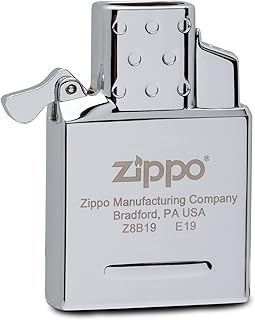The Science Behind the Zippo Lighter: How Does It Work?
The Zippo lighter, a classic and iconic design, works through a clever combination of mechanical and chemical processes. Here's a breakdown:
1. The Fuel:
* Naphtha: Zippo lighters use a highly refined petroleum distillate called naphtha as fuel. Naphtha is a volatile, flammable liquid with a low flash point, meaning it ignites easily.
2. The Flint:
* Cerium & Lanthanum: The flint used in Zippo lighters is a special alloy containing cerium and lanthanum. When struck against a rough surface, these metals create sparks.
3. The Striking Mechanism:
* Friction: The iconic "click" of a Zippo is the sound of the flint striking the metal wheel. This friction generates heat, creating sparks.
4. The Wick:
* Cotton & Absorbent Material: The wick is made of cotton or similar absorbent material. It acts like a sponge, drawing up the naphtha from the fuel reservoir.
5. The Flame:
* Vaporization & Combustion: The sparks ignite the naphtha vapor rising from the wick. The flame burns continuously as long as there is fuel and oxygen.
6. The Wind-Resistant Design:
* Metal Case & Shield: The unique, slightly curved design of the Zippo case and its integrated shield effectively protect the flame from wind. The shield directs the wind upwards, helping the flame to stay lit.
7. The Filler Valve:
* Easy Refueling: The Zippo's filler valve allows for easy and controlled refueling. The valve ensures a secure seal, preventing leaks and spills.
In Summary:
The Zippo lighter uses a combination of a volatile fuel, a spark-producing flint, a wick to draw up the fuel, and a wind-resistant design to create a reliable and enduring flame. It's a simple yet ingenious design that has stood the test of time and become a symbol of durability and reliability.


